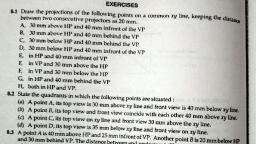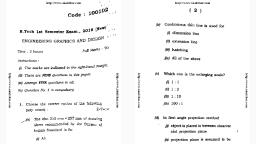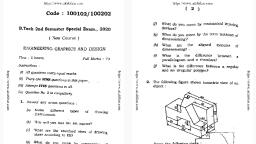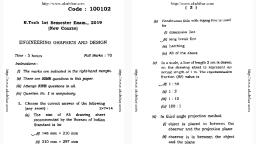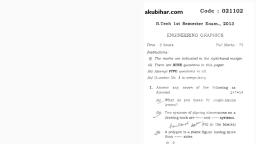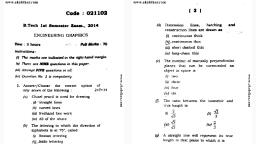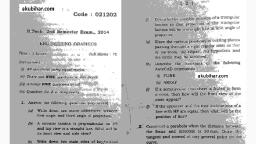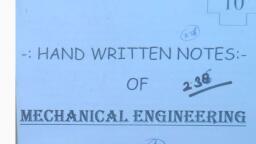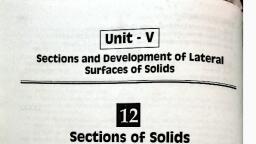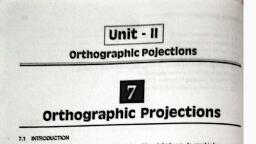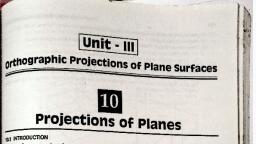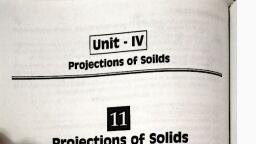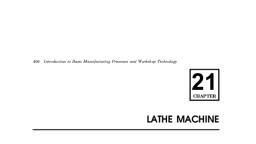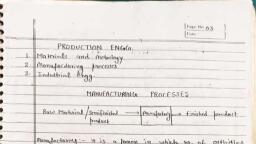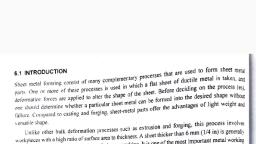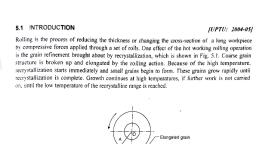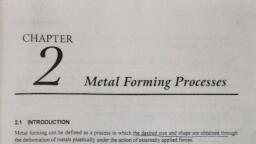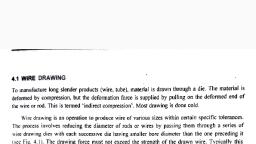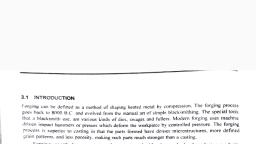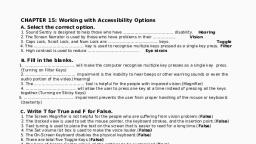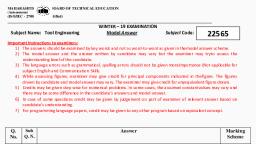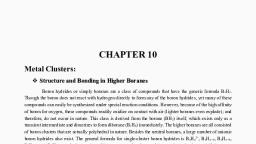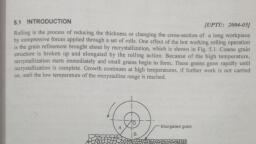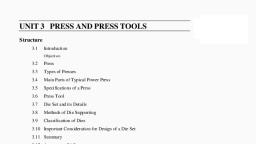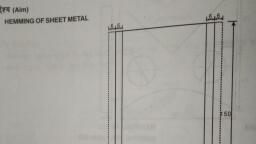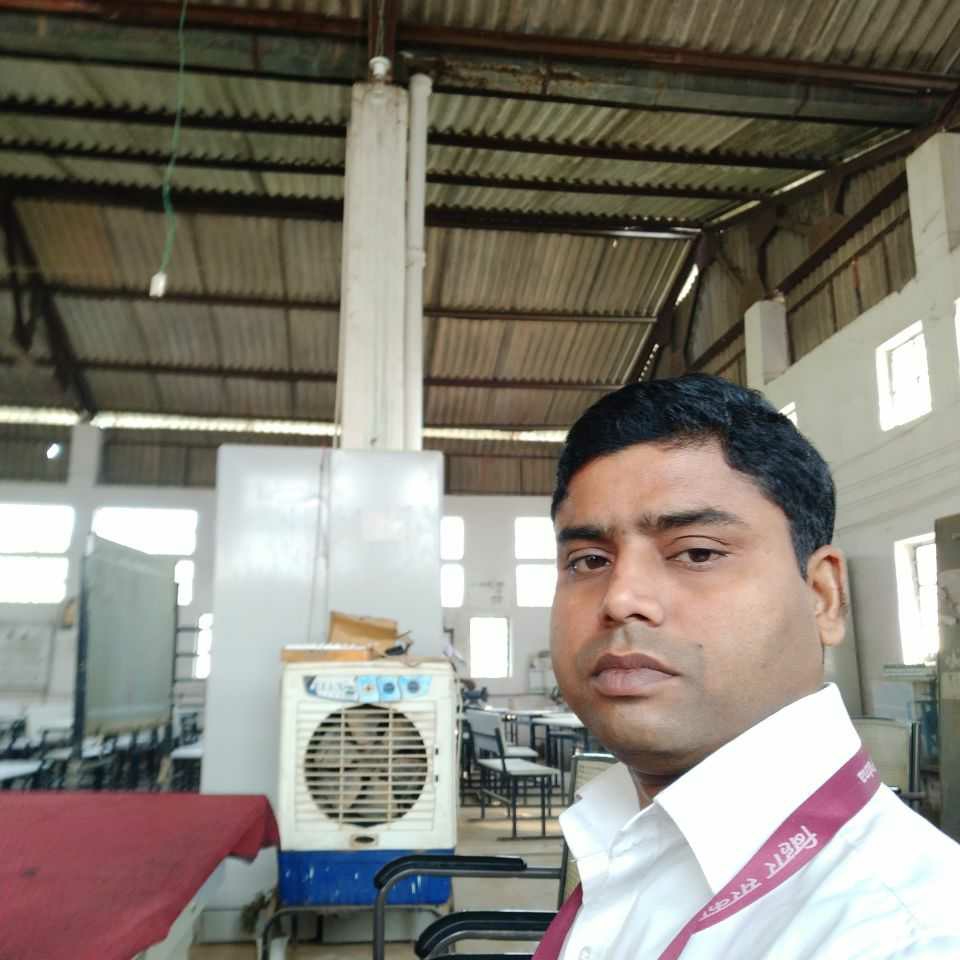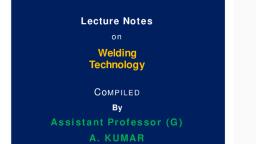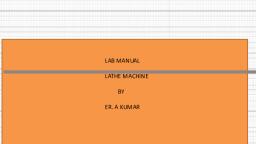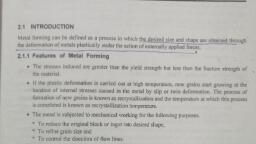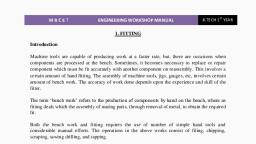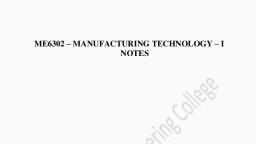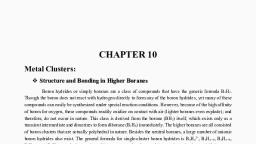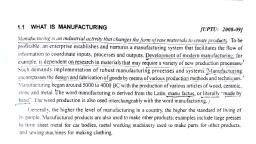Page 1 :
hat are used to form sheet meta, , 6.1 INTRODUCTION, Sheet metal forming consist of Mey ral which a flat sheet of ductile metal is taken, ang, , parts. One or more of these processes is used in +. Before deciding on the process (es), deformation forces are applied to alter the shape of the sheet. A ener the Teinedabite Witom, one should determine whether a particular sheet metal can be _ cade of (igheweldit snd, failure. Compared to casting and forging. sheet-metal parts offer the, , versatile shape., and forging, this process involves, , Inli k def ‘on processes such as extrusion noes, Unlike other bulk deformation pr Secon age ayn asta, , workpieces with a high ratio of surface area to thickness. A sheet th , ante, called a plate. Sheet forming is also called pressworking. It is one of the most important metal working, , processes due to its application in a wide range of products. Sheet metal is produced by a rolling, process. It is generally coiled after rolling if the sheet is thin; if thick, it is available as flat sheets or, , plates., Before a sheet metal is formed, a blank of suitable dimensions is first removed from a large, , sheet. Removal is usually done by a shearing process. Other methods for cutting sheets also exist. A, band saw. which is a chip removal process, is one option. Flame cutting is another common method, for thick steel plates. Laser cutting has also become an important process and is used with computer, controlled equipment to cut a variety of shapes consistently., , The basic mechanisms of all sheet-forming processes are stretching and bending. The major factors, that influence the overall operation are: elongation, yield-point elongation, anisotropy*, grain size, residual, stresses. springback, and wrinkling., , Advantages of Sheet Metal Forming are—, , e It is a mass production process., , , , * Anisotropy is the concept that a material has a preferred strain di, > 8.2 ‘ain direction. In shee z, ‘ . sheet ate!, and normal or plastic anisotropy are present. Plastic anisotropy is measured as the metas both planar anisotropy, strain, ‘This value is called the r-value and is an indicator of the directional difference Palio i! strain to trickness, ces ina rolled material like sheet.
Page 2 :
100, , , , sheet Metal Working 117, ¢ Production rates are rapid. Formin, , 8 Speeds can run as hi, average of 50 to 100 f¥/imin for m igh as 300 ft/min for some shapes and, , Ost applications., e The low labour cost and the savings in material cost, quantities are large enough to Pay off the initial tooling a, Disadvantages of Sheet Metal Forming are—, , provide very low cost production if, ind equipment charges., , ¢ Generally, production requirements in e, , | xcess of 100,000 fi/year are necessary before the process, becomes economical., , e Setup times are lengthy due to the large number of tooling elements that are inter-related., , 6.2 PRESSES, , Presses shape workpieces without cutting away material, that is, without making chips. A press consists, of a frame supporting a stationary bed, a ram, a power source, and a mechanism that moves the ram, in line with or at right angles to the bed. The ram is guided in the frame of the machine to give a, definite path of motion. Presses are equipped with dies and punches designed for such operations as, forming. punching, and shearing. They are capable of rapid production because the operation time is, the time needed for only one stroke of the ram. There are three methods of working sheet metal in, presses :, , (1) Shearing : It is a sheet-metal cutting operation along a straight line between two cutting edges., Shearing is used to cut large sheets into smaller sections for subsequent pressworking operations., , (i) Deep Drawing : It is characterized by the production of a parallel-wall cup from a flat blank of, sheet metal., , (il) Bending : It is the straining of material, usually flat sheet or strip metal, by moving it around a, straight axis lying in the neutral plane. Metal flow takes place within the plastic range of the, metal. so that the bent part retains a permanent set after removal of the applied stress., , 6.2.1 Classification of Presses [UPTU: 2006-07], , Presses are classified according to the following characteristics :, 1. Source of power, (1) Hand press or fly press, (i) Power press, 2. Type and design of frames, (7) Inclined press (i/) Gap press, (ni) Straight side press (iv) Arch press, , (v) Horn press
Page 3 :
= », , Manufacturing Se Ong, 118, , 3. According to action, (7) Single action (i), Double-action, (1) Triple action, , 4, Mechanism used for applying power to ram, , (@) Crank (it) Eccentric, (ii) Cam (iv) Toggle, (v) Knuckle (vi) Rack and Pinion, , (v7) Hydraulic, , 5. Number of drive gears, (/) Single drive (ii) Twin drive, (ili) Quadruple drive, , Method of Power transmission from motor to crankshaft., () Direct, , 7. Based on tonnage, , (ii) Non-geared, , (@) Mechanical press (ti) Hydraulic press, , The various Presses are discussed below—, 1. Source of Power, , (1) Hand Press or FlyThe construction consist 0, Which slides in the guide, bottom. Thus, as the ram, metal,, , Press : This type of press is made of castfa screw which Carries a whee] fitted wit, fitted at the other end of the screw, Furthei, moves, the punch also moves Providing, , iron frame and is hand operated., fh a handle at one end, and a ram, t, the ram carries the punch at its, the required thrust on the sheet, , 2. Type and Design of Frames, , () inclined Press : An inelinable pen back press with a £ap fram, can be tilted backward to permit the parts ang Scrap to slide off th, into a box. Most presses of this type are adjustable and vary from, Inclinable presses are often used in the Production of smal] Parts invo, and similar Operations,, , € is shown in Fig. 6.1. This press, back side. Pants Slide by gravity, Vertical to a Steep angle position., Iving bending, Punching, blanking, , y——, , p
Page 4 :
> _, , sheet Metal Working, , , , Ram, , Bolster, , ited, , 1 its, heel, , The, ) by, , rey:, ned, , ; (i) Gap Press : Gap or C-frame presses are named because of the open arrange, ree frame as shown in Fig. 6.2. Gap presses provide excellent clearance around the die:, , 119, , , , , , , , , , —+;— Controls, , , , , , , , Frame, , , , , , , , , , , , , , , , Fig. 6.1. Open-back inclinable press., , ment of the press, s and permit the, , vil) press to be used for long or wide parts. Stamping operations are performed on a gap press., , jor, “ine
Page 5 :
120, , , , , , , , , , , , , , Fig. 6.2. Gap press., , (in) Straight-Side Press : These are stronger since the heavy loads are taken in a ve, by the massive side frame, and there is little tendency for the punch and die alignment, by the strain. Fig. 6.3 shows a straight side press. These presses are available for capac, , of 1250 tons (11 MN)., , , , , , , , , , , , , , , , , , Ttical direction, , , , 0 be affectey, ities in excess, , the, | o, fh, ; Fig. 6.3, Straight side press., ; Straight side presses are manufactured with various means of supplying power and different methods, j of operation. For smaller Presses a single crank or eccentric is usually employed, but as the size of, { press increases, additional cranks are needed to distribute the load on the slide uniform! The slide is, guided by cither one, two, or four guides or points of suspension ., (iv) Arch Press : The arch press, shown in Fig. 6.4 is named for a particular shape of its fram i, The lower part of the frame near the bed is widened to permit the worki ere a of sheet q, metal. The crankshaft is small in relation to the area of the slide ah ¢ = fe . is presses, are not designee for heavy work. Arch Presses do blanki i oe ee h, ing, bending and tri i, rimming., , _

